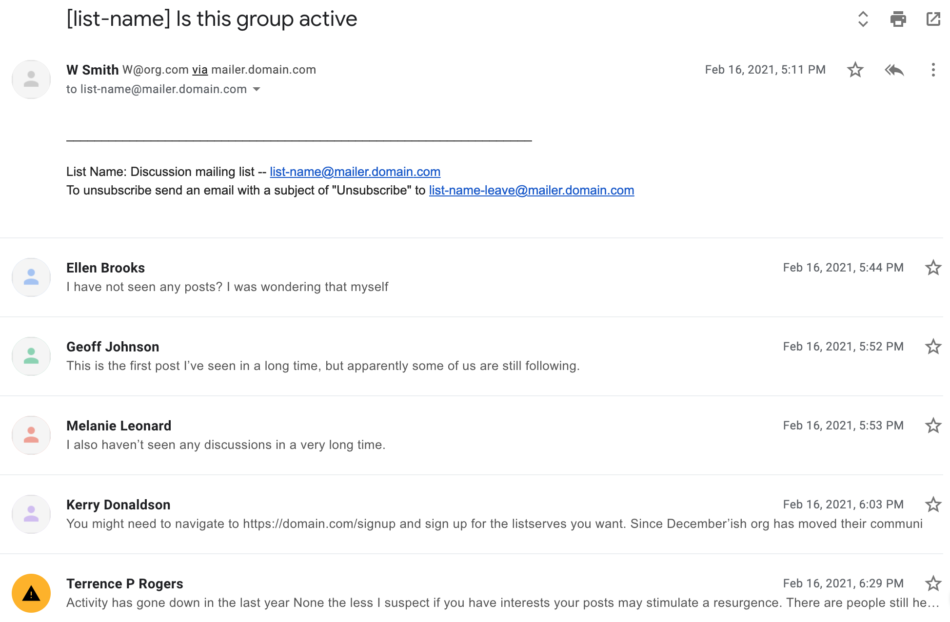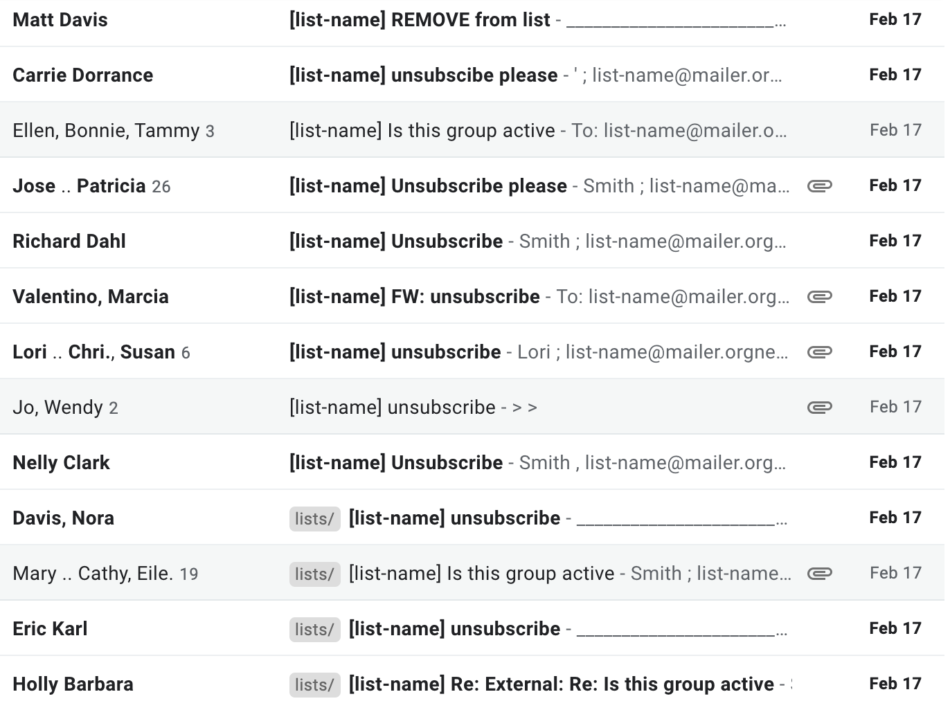We’re all familiar enough with online discussions going wrong and the rifts in our society that technology exposes and sometimes amplifies. Different people no longer see the same search results for the same term – they see a customized view based on their data. Social media becomes echo chambers of people who share similar worldviews. Individuals capitalize on these divisions for personal gain, and the cycle continues. Discussions turn toxic. The online venue that was once a source of connection or useful information suddenly becomes less useful or just unpleasant.
Or sometimes a simple design flaw can cause things to go wrong.
One industry-specific email discussion list imploded with an innocent question from a moderator: “is this thing still on?”

This might have been done better. I’m not sure what exactly the moderator was trying to learn, but if it was finding out how many people are subscribed, there’s a less disruptive way to do that by just looking at the subscribers in the administrator’s view. If the goal was trying to see who is still engaging in conversation in the group, he/she could have started a topical conversation rather than the empty question of “Is this group active?”
However, that’s not really the point. The main problem with this list was the unsubscribe mechanism. Emails come from “list-name@mailer.domain.com”. This is written in the footer as well, and that email address where one’s reply will go if they hit the “reply” button. Then there’s the line below: “to unsubscribe, send an email with a subject of “Unsubscribe” to “list-name-leave@mailer.domain.com”.
So the natural thing to do is hit reply and change the subject to “Unsubscribe”, but if one doesn’t change the email address to add the “-leave” to it, that doesn’t unsubscribe, but rather, it sends the “Unsubscribe” email to the entire list.
This causes a snowball effect – as more people get garbage emails from this list, more try to unsubscribe, and many do it the natural (but wrong) way, sending more garbage emails.

This could have been prevented by usability testing or even heuristic evaluation or beta testing the list. In any case, one key aspect that often gets overlooked when finding usability problems is how severe they are. Is the problem going to cause someone to have to click more times than they would otherwise, or is the problem going to decimate a userbase?